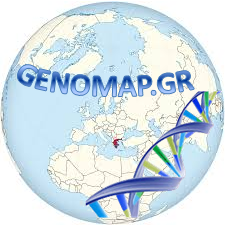Pursued Objectives

Leveraging the expertise of an interdisciplinary team of collaborators including geneticists, biologists, computer scientists, and medical professionals, the proposed project reconstruct the complex history of Greek sub-populations, providing a high resolution genomic reference map of Greece and further insight into European population migrations and substructure. Our specific aims run in three major directions:
1. Dissect population structure of Greek sub-populations both within Greece as well as the ancient Greek diaspora, reconstructing the complex history of the Greek populations and placing Hellenic genome diversity in a worldwide framework. Towards this goal we pursue he following directions:
- Study the genetic structure of the populations of the Hellenic diaspora in an attempt to track historic Greek migrations of the pre-classical, Hellenistic and recent periods and investigate Greek contribution to modern European populations. In order to do so, sample collection and analysis is extended to include regions such as Cyprus, Sicily, Apulia, Calabria and refugees from Kappadokia, Pontos, Ionnia, Eastern Thrace, Eastern Romylia, and Northern Epirus.
- Analyze Greek genomic variation in a European and worldwide framework aiming to elucidate the complex pathways of human migration into Europe and further explore timing and sea versus land colonization of the continent as well as European Neolithic expansions.
2. Build important infrastructure for the study of genomic variation in Greece. We aim to:
- Deposit the DNAs of the Greek populations in a biobank, thus preserving them for the future generations of investigators who may wish to explore and preserve the history of the studied populations, which is gradually being lost through population movements and panmixia.
- Create an online Genomic Reference Map of the Greek sub-populations. Access to the data that we generate through our established database will enable researchers from Greece and around the world to download available genomewide data on the sampled populations.
3. Pursue wide-spread dissemination of our results to the scientific community and the general public. Towards this goal we disseminate knowledge through publications in peer reviewed journal as well as popular press, and organise workshops and lectures.
